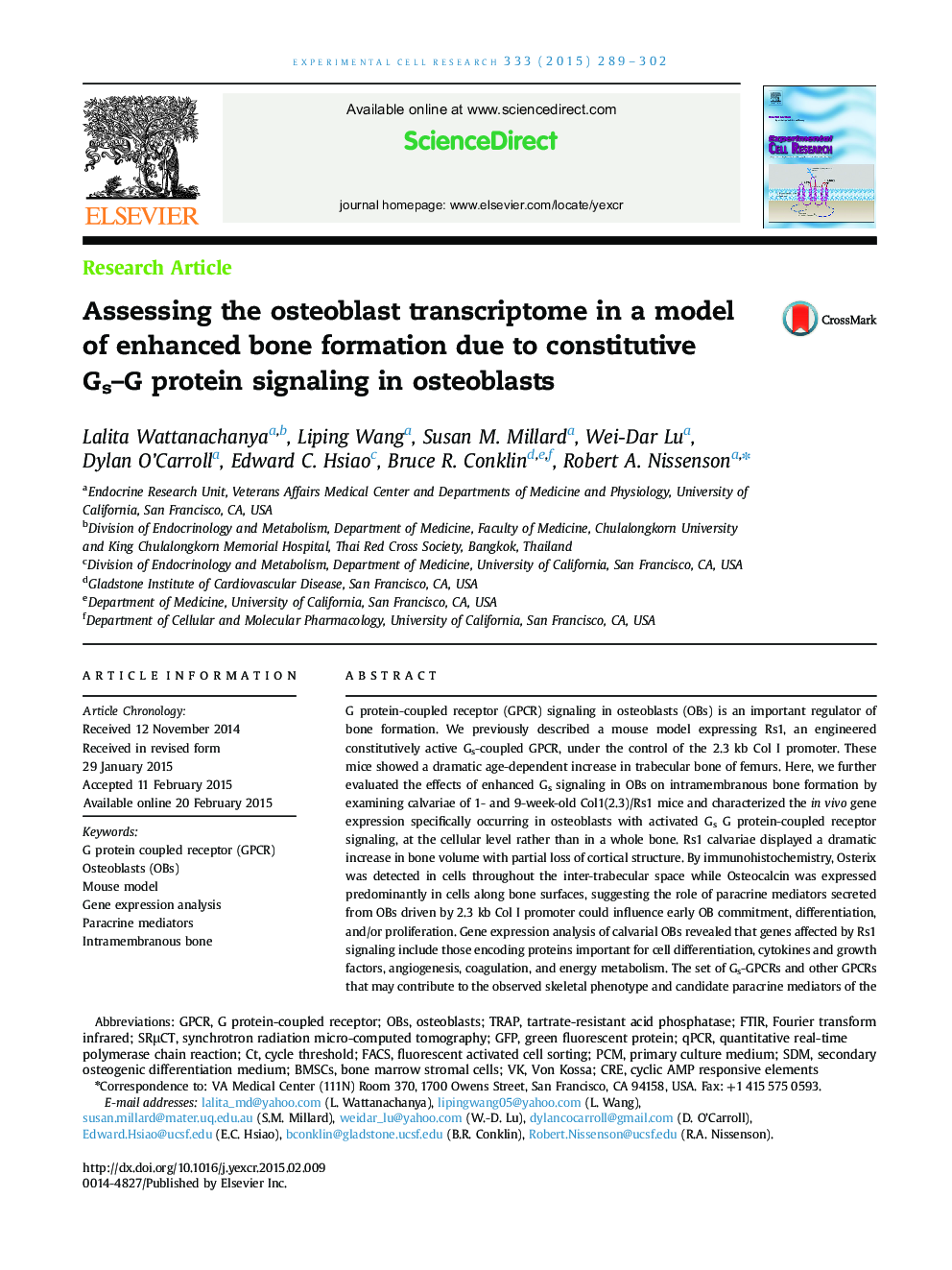| Article ID | Journal | Published Year | Pages | File Type |
|---|---|---|---|---|
| 10903807 | Experimental Cell Research | 2015 | 14 Pages |
Abstract
G protein-coupled receptor (GPCR) signaling in osteoblasts (OBs) is an important regulator of bone formation. We previously described a mouse model expressing Rs1, an engineered constitutively active Gs-coupled GPCR, under the control of the 2.3 kb Col I promoter. These mice showed a dramatic age-dependent increase in trabecular bone of femurs. Here, we further evaluated the effects of enhanced Gs signaling in OBs on intramembranous bone formation by examining calvariae of 1- and 9-week-old Col1(2.3)/Rs1 mice and characterized the in vivo gene expression specifically occurring in osteoblasts with activated Gs G protein-coupled receptor signaling, at the cellular level rather than in a whole bone. Rs1 calvariae displayed a dramatic increase in bone volume with partial loss of cortical structure. By immunohistochemistry, Osterix was detected in cells throughout the inter-trabecular space while Osteocalcin was expressed predominantly in cells along bone surfaces, suggesting the role of paracrine mediators secreted from OBs driven by 2.3 kb Col I promoter could influence early OB commitment, differentiation, and/or proliferation. Gene expression analysis of calvarial OBs revealed that genes affected by Rs1 signaling include those encoding proteins important for cell differentiation, cytokines and growth factors, angiogenesis, coagulation, and energy metabolism. The set of Gs-GPCRs and other GPCRs that may contribute to the observed skeletal phenotype and candidate paracrine mediators of the effect of Gs signaling in OBs were also determined. Our results identify novel detailed in vivo cellular changes of the anabolic response of the skeleton to Gs signaling in mature OBs.
Keywords
CRESynchrotron radiation micro-computed tomographyG protein coupled receptor (GPCR)Von KossaOBSGPCRTRAPBMSCsGFPFACSqPCRPCMcycle thresholdOsteoblastsIntramembranous bonetartrate-resistant acid phosphataseFourier transform infraredGene expression analysisfluorescent activated cell sortingbone marrow stromal cellsFTIRMouse modelSDMquantitative real-time polymerase chain reactiongreen fluorescent proteinG protein-coupled receptor
Related Topics
Life Sciences
Biochemistry, Genetics and Molecular Biology
Cancer Research
Authors
Lalita Wattanachanya, Liping Wang, Susan M. Millard, Wei-Dar Lu, Dylan O'Carroll, Edward C. Hsiao, Bruce R. Conklin, Robert A. Nissenson,
